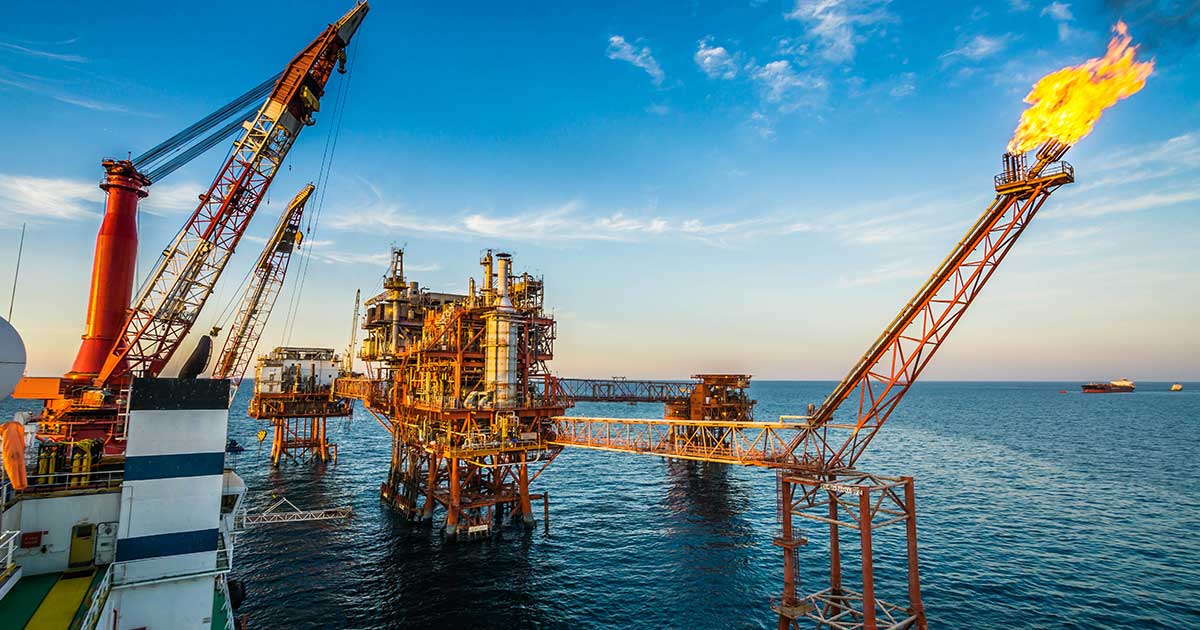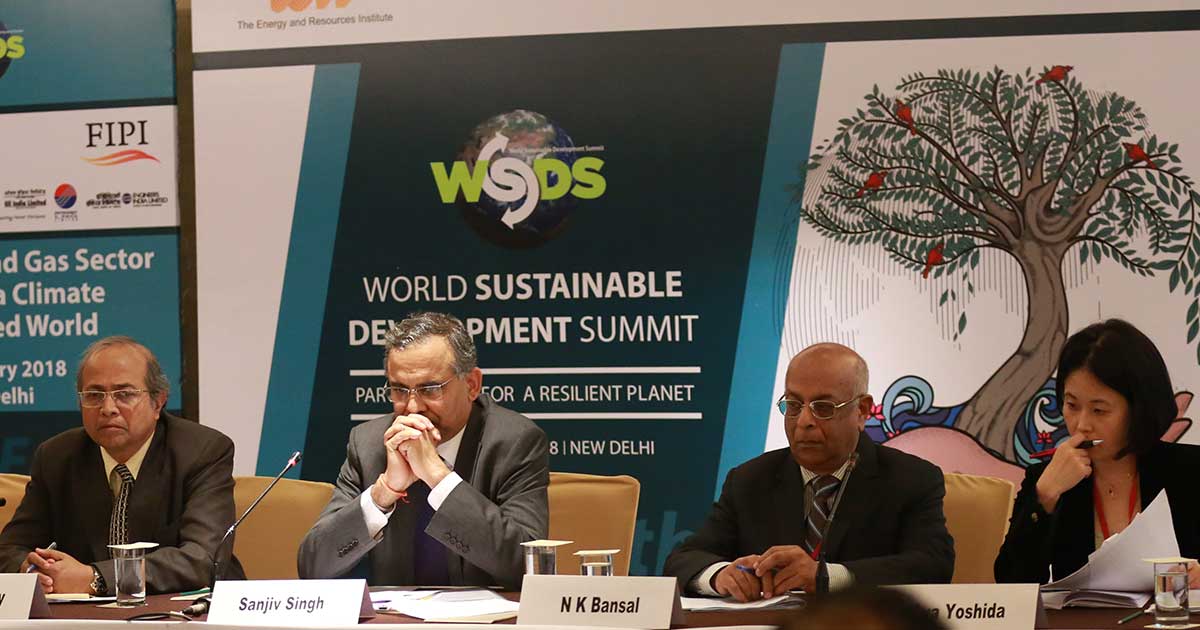
Preparing India’s Oil & Gas Sector for Changing Climate

With the robust growth that India needs, it is unlikely that oil and gas would cease to have a role in India’s energy mix, said Mr Prabir Sengupta, Distinguished Fellow, TERI, while setting the tone for the panel discussion on “Future of Oil and Gas Sector of India in a Climate Constrained World” at the WSDS 2018.
In 2017, oil and gas constituted over one third of India’s primary energy mix. The Paris Agreement on climate change requires countries to better document their mitigation and adaptation challenges and efforts as well as progressively revise their nationally determined contributions (NDCs) towards achieving the global goal of limiting mean temperature rise to well below 2° C. Achieving the target in the Paris Agreement would require decarbonization of the energy sector and electrification of transport sector.
According to Mr Sengupta, past experience shows that amongst the range of risks posed by climate change, the oil and gas sector is primarily vulnerable to extreme climatic events, such as cyclones, storm surges, and floods. It is also sensitive to slow onset events, such as rise in mean ambient temperature, increased water scarcity, and declining soil moisture.
Risks to Infrastructure
Risk to infrastructure is a function of its vulnerability and exposure to climatic event, said Dr Manish Shrivastava, Fellow, TERI. A particular climatic event, such as extreme rainfall, may become more frequent or less intense compared to past patterns, he said. Hence, when considering climate change-induced risks to infrastructure, one has to consider how risk profile at a given location is likely to change with respect to existing profile. One must also consider that if similar assets are equally exposed to the same climatic event, the asset with higher capacity is at a higher risk in terms of financial losses, he said.
 How bright is the future for oil & gas in India? Experts look into the crystal ball at WSDS 2018
How bright is the future for oil & gas in India? Experts look into the crystal ball at WSDS 2018
Market Outlook under NDCs
Talking about NDCs, Dr Ritu Mathur, Senior Fellow & Director, TERI, said India’s long-term energy demands are expected to be influenced not only by its economic growth targets, but also with the way government policies and consequently alternative technologies evolve in terms of their costs and efficiencies. To assess the implications of alternative energy development paths for India, a scenario-based analysis using TERI’s MARKAL model has been undertaken that visualizes different scenarios related to policies and trends in energy efficiency and renewable energy share as it was in 2015 till 2050; the balance between use of fossil fuels and non-fossil fuels for meeting India’s current NDC target; the rate of reduction in emission intensity of GDP through 2050; rates of GHG emission reductions consistent with the target of 2° C, and the pursuit of renewable energy supply along with rapid adoption of electric vehicles.
Transparency Challenges
Dr Mathur observed that the default emission factors for developing countries are significantly higher compared to the default emission factors for developed countries. Given that India’s oil and gas sector is technologically at par with developed countries, continued use of default emission factors for developing countries in GHG emissions accounting from the sector may result in over reporting of emissions.
Preparedness of the Sector
According to Dr Shrivastava, the most glaring gap in terms of sector’s preparedness with respect to climate change is the understanding of potential changes in the pattern of climatic activities and precise understanding of the resilience of the sector. The regulatory framework and guidelines also need to be aligned with current scientific findings on climate change and its impact on the Indian subcontinent.
The Way Forward
Summing up, Dr Shrivastava said the Indian oil and gas sector should be concerned more from the resilience point of view rather than mitigation of GHG emissions. The preparatory actions, primarily pertaining to the existing infrastructure, should be taken by the concerned companies within the next five years. In the long term, he said, a comprehensive scientific programme involving industry, academic institutions, and government agencies is required to build the necessary knowledge base and integrated impact models to better assess coastal vulnerability.